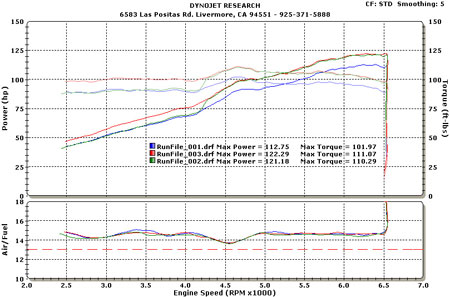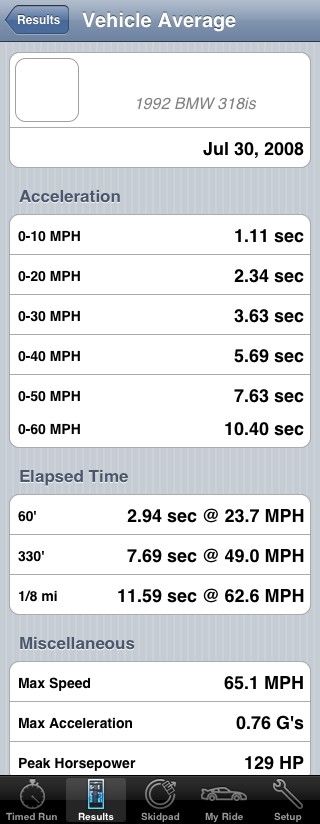Click any image for a larger version.
Give us an iPhone application that relates to cars and we're all over it. Apparently, so is the crew at Motive. They took out an Audi S5, mounted a Racelogic V-Box onto the windshield and brought along a Dynolicious-equipped iPhone to see how it stacked up.
The V-Box uses both GPS and yaw sensor data to serve up 0-60 times, 1/4-mile trap speeds and lateral Gs, whereas the iPhone only makes use of yaw information to deliver the same numbers... along with estimated horsepower figures. While Motive wanted to find out how the Dynolicious would do with 0-60 times, we were interested in how close it would come to wheel horsepower given both an estimated weight and drivetrain loss. That meant hitting up the Dynojet at Modacar and strapping our own Project Track Slut onto the rollers.
Read on for both Motive's conclusions and our own.
Give us an iPhone application that relates to cars and we're all over it. Apparently, so is the crew at Motive. They took out an Audi S5, mounted a Racelogic V-Box onto the windshield and brought along a Dynolicious-equipped iPhone to see how it stacked up.
The V-Box uses both GPS and yaw sensor data to serve up 0-60 times, 1/4-mile trap speeds and lateral Gs, whereas the iPhone only makes use of yaw information to deliver the same numbers... along with estimated horsepower figures. While Motive wanted to find out how the Dynolicious would do with 0-60 times, we were interested in how close it would come to wheel horsepower given both an estimated weight and drivetrain loss. That meant hitting up the Dynojet at Modacar and strapping our own Project Track Slut onto the rollers.
Read on for both Motive's conclusions and our own.
For $12.99, the Dynolicious software seemed too good to be true, but we were willing to reserve judgment until testing proved otherwise. While we've played with a few Racelogic boxes before, and found the data acquisition and customization capabilities to be beyond reproach, the cost of an entry-level model – around $499 – may be a bit prohibitive for your average enthusiast.
Motive turned off the one-foot rollout setting on both units – interested in only 0-60 times and not quarter-mile runs -- and performed ten seperate sprints to 60. You can check out Motive's screen shots of the results here, but the results showed the Dynolicious software was anywhere between 0.24 to 0.65 seconds behind the V-Box, which kept very consistent times throughout the test.

With our 1992 BMW 318is mounted onto a Dynojet on a 90-degree day, it put down a respectable, if not particularly powerful, 122 hp to the rear wheels. The graph above shows the last two runs (red and green) were within one horsepower of one another, while the first run (in blue), was done with the A/C on... whoops.

Is it worth it? For $12.99 there are worse things you can spend on your ride (see: LED windshield washer nozzles), but we're not ready to give up our dreams of V-Box ownership yet. And with detailed horsepower and torque curves (not to mention AFR), a traditional dyno is still the best means of getting accurate figures at the wheels. Neither are cheap, but price and precision are rarely mutually exclusive.



Sign in to post
Please sign in to leave a comment.
Continue